Evaluation of Spatio-Temporal Settlement Pattern in an Airport Region
Abstract
1. Introduction
2. Literature Review
2.1. Advent of an Airport Region
2.2. Indian Scenario
3. Methods and Material
3.1. Study Area
3.2. Methodology for Delineation of Study Area
Data Compilation for the Analysis
3.3. Hierarchy of Settlements in the Airport Region: Discussion
3.4. Functional Interaction of Settlements Based on Amenities: Methodology
3.5. Cumulative Functionality index from 2001 to 2011: Discussion
3.6. Results and Discussion
4. Conclusions
5. Limitation of the Study
Author Contributions
Funding
Institutional Review Board Statement
Informed Consent Statement
Data Availability Statement
Conflicts of Interest
References
- Coogan, M.A. Ground Access to Major Airports by Public Transportation; Transportation Research Board: Washington, DC, USA, 2008. [Google Scholar] [CrossRef]
- Freestone, R. Planning, Sustainability and Airport-Led Urban Development. Int. Plan. Stud. 2009, 14, 161–176. [Google Scholar] [CrossRef]
- Kazda, A.; Hromádka, M.; Mrekaj, B. Small regional airports operation: Unnecessary burdens or key to regional development. Transp. Res. Procedia 2017, 28, 59–68. [Google Scholar] [CrossRef]
- Breidenbach, P. Ready for take-off? The economic effects of regional airport expansions in Germany. Reg. Stud. 2019, 54, 1084–1097. [Google Scholar] [CrossRef]
- De Jong, B.; Suan-Sanchez, P.; Dross, M. Towards a relational planning approach? Case studies in the airport regions of Amsterdam, Barcelona and Munich. Sch. Plan. 2008, 2016, 1–25. [Google Scholar]
- Kahsai, M.S.; Gebremedhin, T.G.; Schaeffer, P.V. A Spatial Analysis of Amenity and Regional Economic Growth in Northeast Region. Rev. Urban Reg. Dev. Stud. 2011, 23, 77–93. [Google Scholar] [CrossRef]
- Freestone, R.; Baker, D. Spatial Planning Models of Airport-Driven Urban Development. J. Plan. Lit. 2011, 26, 263–279. [Google Scholar] [CrossRef]
- Mokhele, M. Spatial economic evolution of the airport-centric developments of Cape Town and OR Tambo international airports in South Africa. Town Reg. Plan. 2017, 70, 26–36. [Google Scholar] [CrossRef]
- Mokhele, M. Spatial Economic Attributes of Airport-Centric Developments in Cape Town and Johannesburg. Doctoral Dissertation, Stellenbosch University, Stellenbosch, South Africa, 2016. [Google Scholar]
- Mokhele, M. Spatial economic attributes of OR Tambo and Cape Town airport-centric developments in South Africa. J. Transp. Supply Chain. Manag. 2018, 12, 1–12. [Google Scholar] [CrossRef]
- Frétigny, J.-B. How Aeromobilities Are Changing? Reviewing The Literature On European Airports. Mobil. Hist. 2017, 1, 95–100. [Google Scholar] [CrossRef][Green Version]
- Donnet, T. Integrated governance arrangements of airport-region urban infrastructure development. In Proceedings of the 14th Annual Conference of the International Research Society for Public Management: The Crisis: Challenges for Public Management, IRSPM XIV, Bern, Switzerland, 7–9 April 2010. [Google Scholar]
- Strategic Plan (2010–2015). (n.d.). Retrieved 25 April 2022, from Ministry of Civil Aviation. Available online: https://www.civilaviation.gov.in/sites/default/files/mocaplan_0.pdf (accessed on 21 April 2022).
- Group (IHLG), India Brand Equity Foundation. Aviation Benefits Report. ICAO. 2019. Available online: https://www.icao.int/sustainability/Documents/AVIATION-BENEFITS-2019-web.pdf (accessed on 21 April 2022).
- Tveter, E.; AS, M. Effects of Airport Accessibility on Regional Development: Evidence from Implementation of Regional Airports in Norway; Elsevier: Amsterdam, The Netherlands, 2016. [Google Scholar] [CrossRef]
- Charles, M.; Barnes, P.; Ryan, N.; Clayton, J. Airport futures: Towards a critique of the aerotropolis model. Futures 2007, 39, 1009–1028. [Google Scholar] [CrossRef]
- Kasarda, J.D. The Fifth Wave: The Air Cargo-Industrial Complex; Portfolio. A Quarterly Review of Trade and Transportation. 1991, pp. 2–10. Available online: https://trid.trb.org/view/358750 (accessed on 21 April 2022).
- Prins, M. Landing Airports. Analysing the Transformation of Airport Areas. Regional Studies. 2018, pp. 3–18. Available online: https://www.regionalstudies.org/wp-content/uploads/2018/08/Landing_airports_-_evolutionary_approach.pdf (accessed on 21 April 2022).
- Peneda, M.J.A.; Reis, V.D.; Macário, M.D.R.M.R. Critical Factors for Development of Airport Cities. Transp. Res. Rec. J. Transp. Res. Board 2011, 2214, 1–9. [Google Scholar] [CrossRef]
- Appold, S.J. A Short Primer on Aerotropolis and Airport City Planning. SSRN Electron. J. 2013. [Google Scholar] [CrossRef]
- Correia MD, F.; De Abreu ESilva, J. A review of airport concepts and their applicability to the new Lisbon airport process. Rev. Port. Estud. Reg. 2015, 38, 47–58. [Google Scholar]
- Stangel, M. Airport City; Helion Publishing House: Gliwice, Poland, 2018. [Google Scholar]
- Nidhi Sharma Sahore, D.M. Passenger Flow Analysis: A Precursor to UDAN. Int. J. Adv. Innov. Res. 2019, 6, 183–189. [Google Scholar]
- Wadhwa, P. Business Standard. 23 November 2021. Available online: https://www.business-standard.com/article/economy-policy/goldman-sachs-sees-india-s-gdp-at-9-1-in-2022-driven-by-consumption-121112300544_1.html (accessed on 15 May 2022).
- IBEF. February 2022. Available online: https://www.ibef.org/industry/indian-aviation#:~:text=The%20civil%20aviation%20industry%20in,passenger*%20market%20by%202024%5E (accessed on 1 May 2022).
- UDAN Civil Flights Resume at Bagdogra Airport as IAF Spruces up Runway. India News, 26 April 2022; 1.
- Rondinelli, D.A. A Case Study in the Bicol River Basin of the Philippines. In Resource Systems Theory and Methodology Series, No. 2; United Nations University: Tokyo, Japan, 1980; pp. 4–9. [Google Scholar]
- Census of India. Census Digital Library. 20 January 2001. Available online: https://censusindia.gov.in/nada/index.php/home (accessed on 21 March 2022).
- Census of India. Census Digital Library. 10 January 2011. Available online: https://censusindia.gov.in/nada/index.php/home (accessed on 21 March 2022).
- Bertolini, P.; Giovannetti, E.; Pagliacci, F. Regional Patterns in the Achievement of the Lisbon Strategy: A Comparison Between Polycentric Regions and Monocentrics Ones; Dipartimento di Economia Politica, Università degli Studi di Modena e Reggio Emilia: Modena, Italy, 2011. [Google Scholar]
- Spaliviero, M.; Boerboom, L.; Gibert, M.; Spaliviero, G.; Bajaj, M. The Spatial Development Framework to facilitate urban management in countries with weak planning systems. Int. Plan. Stud. 2019, 24, 235–254. [Google Scholar] [CrossRef]
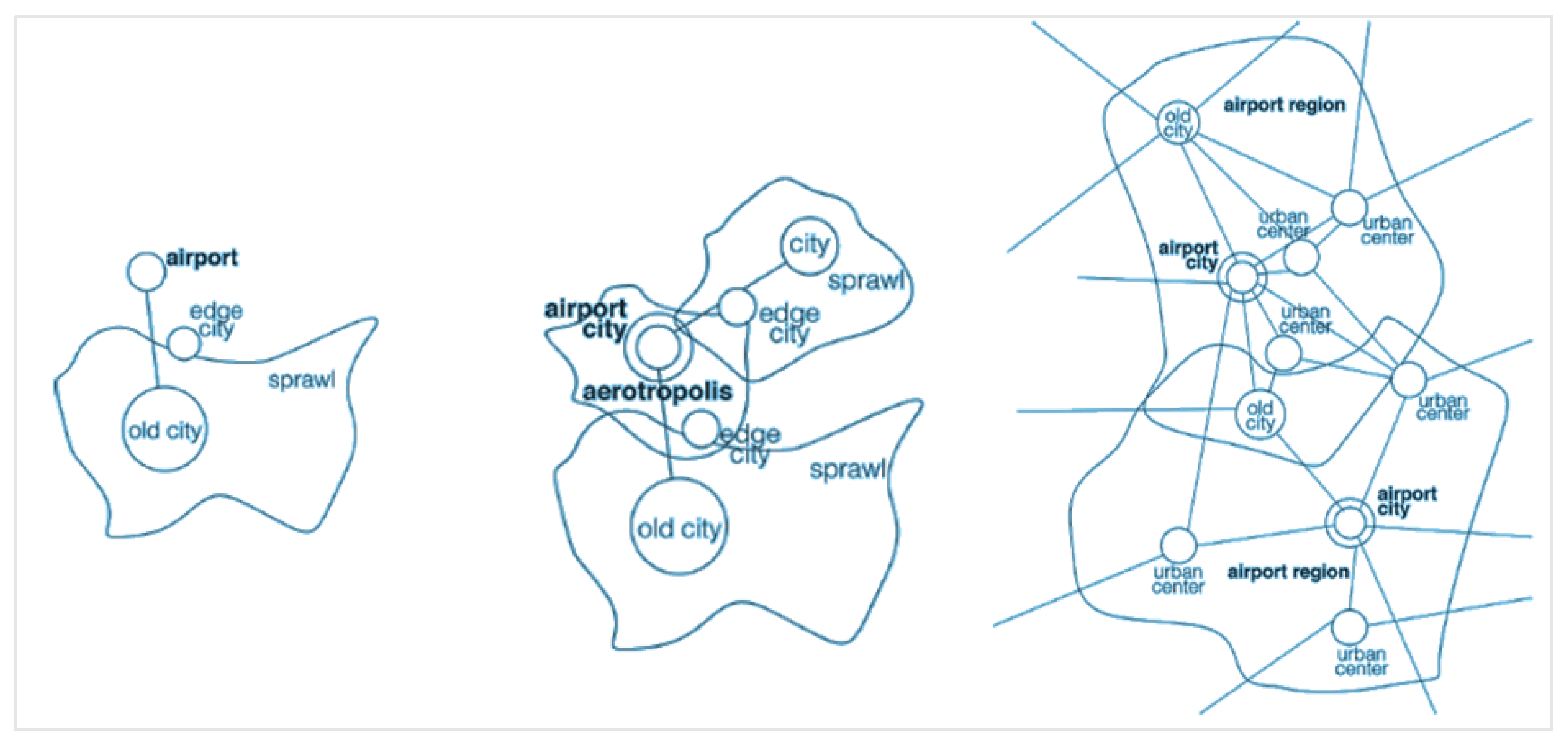
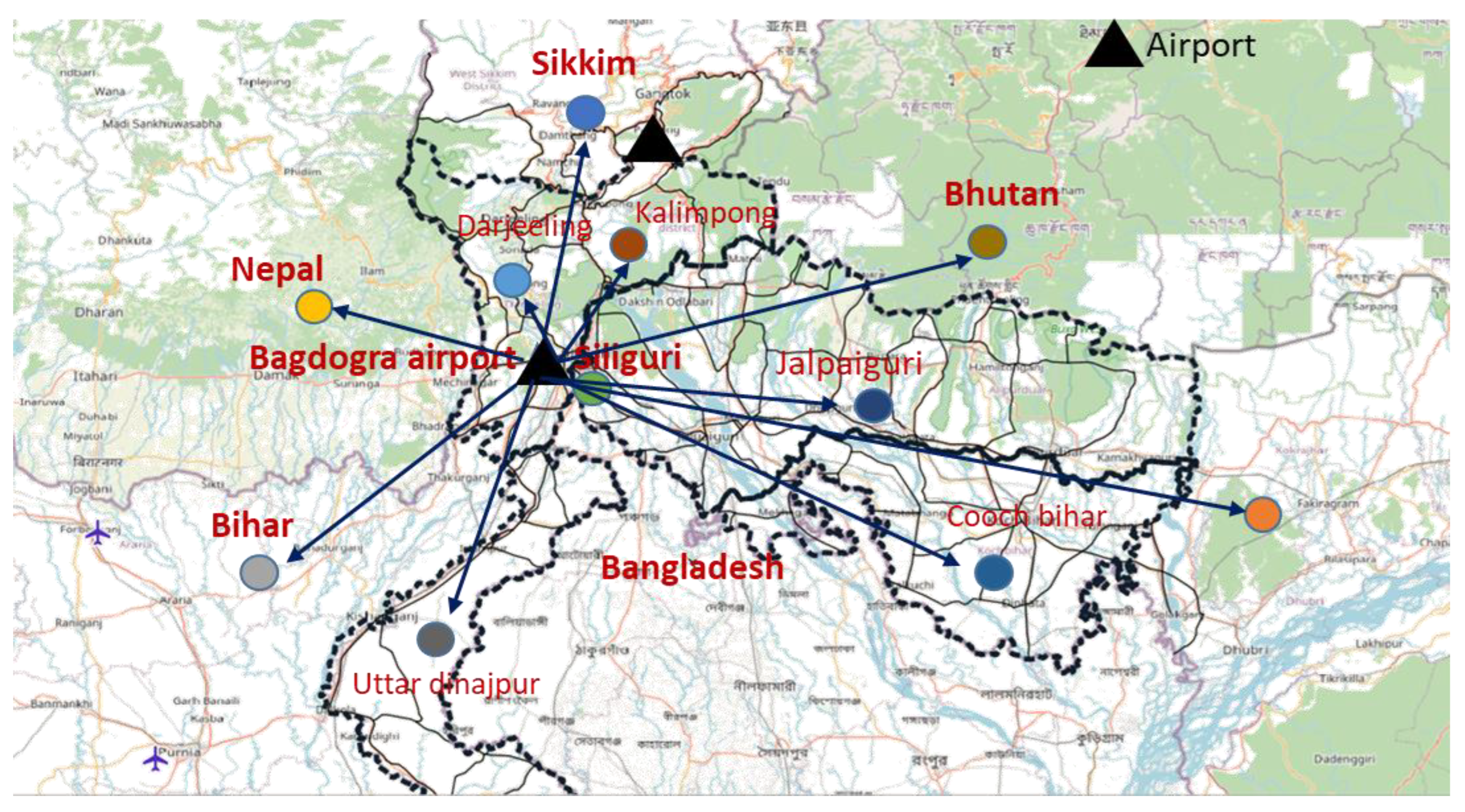
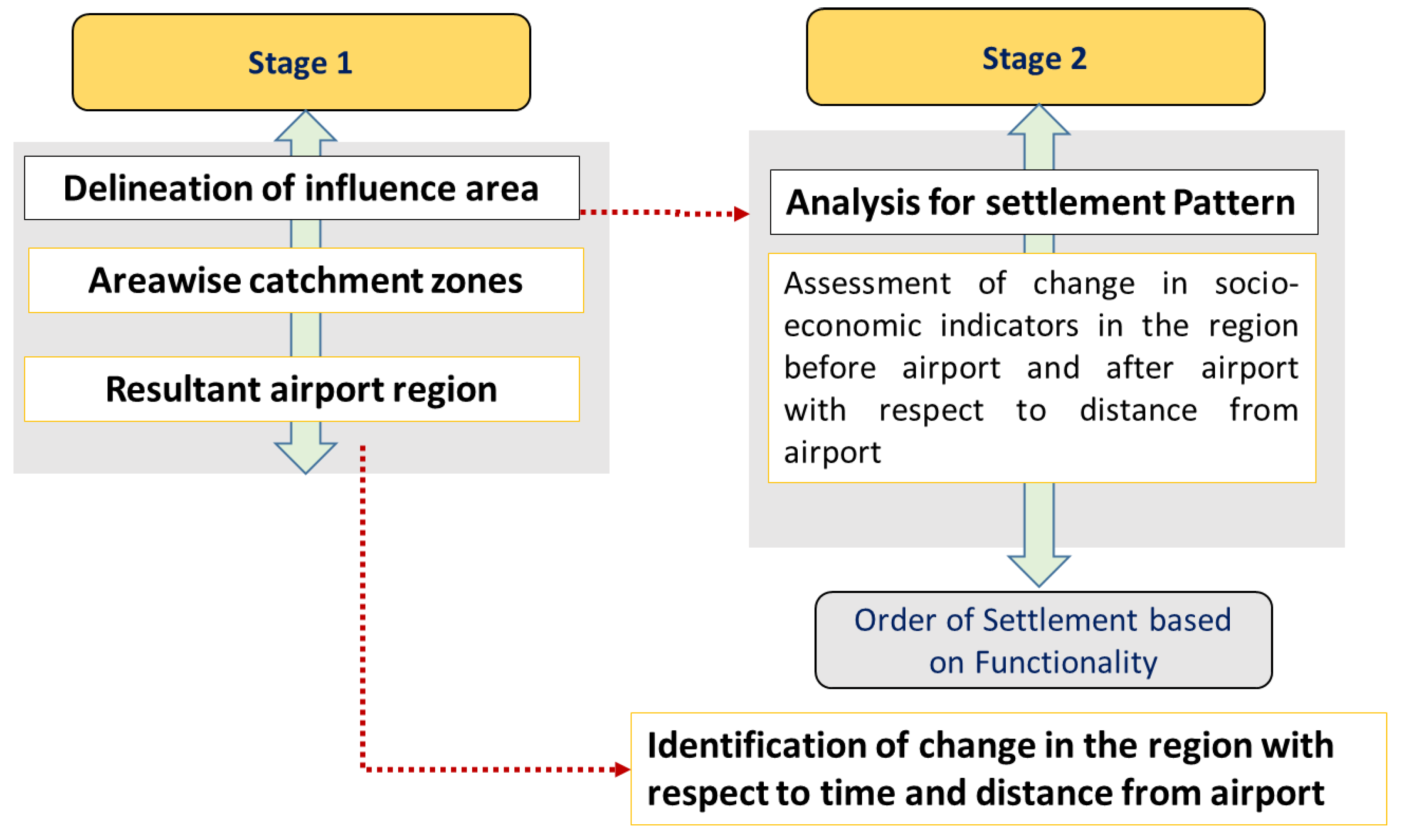
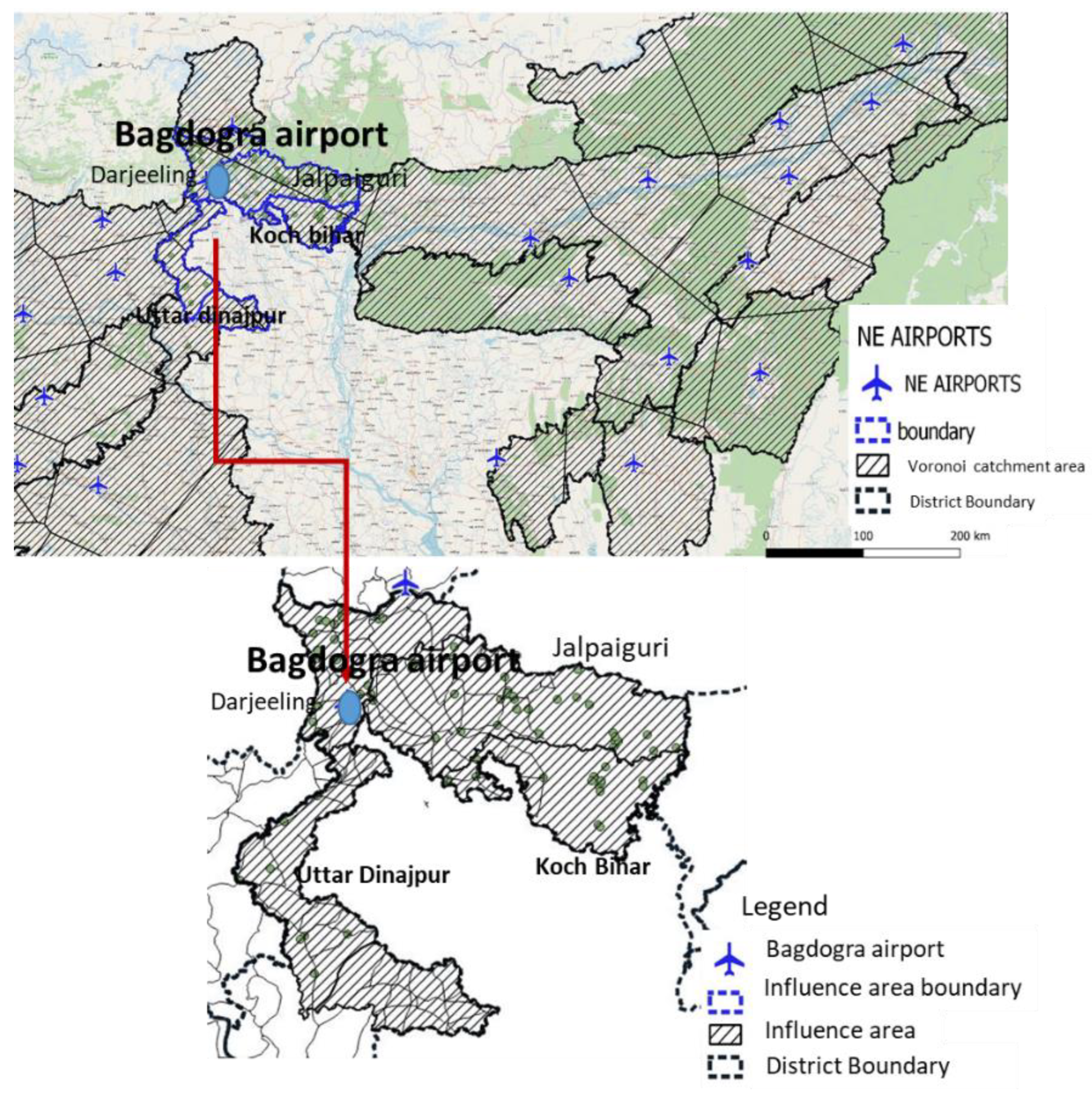
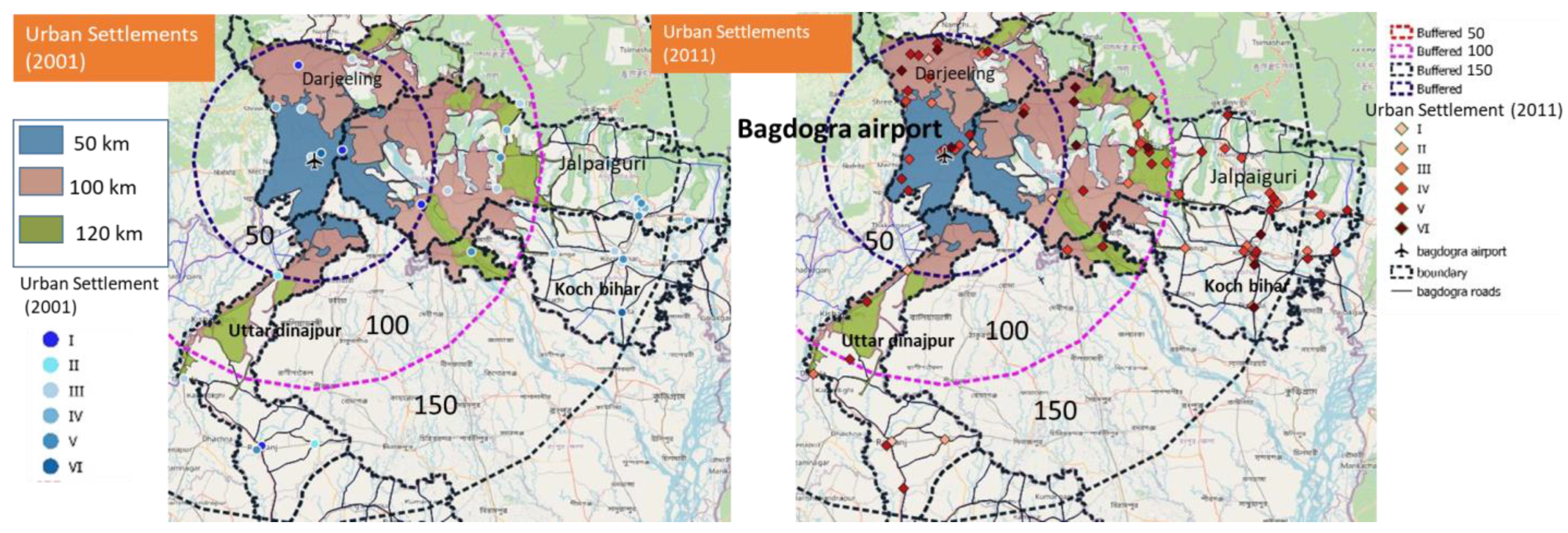
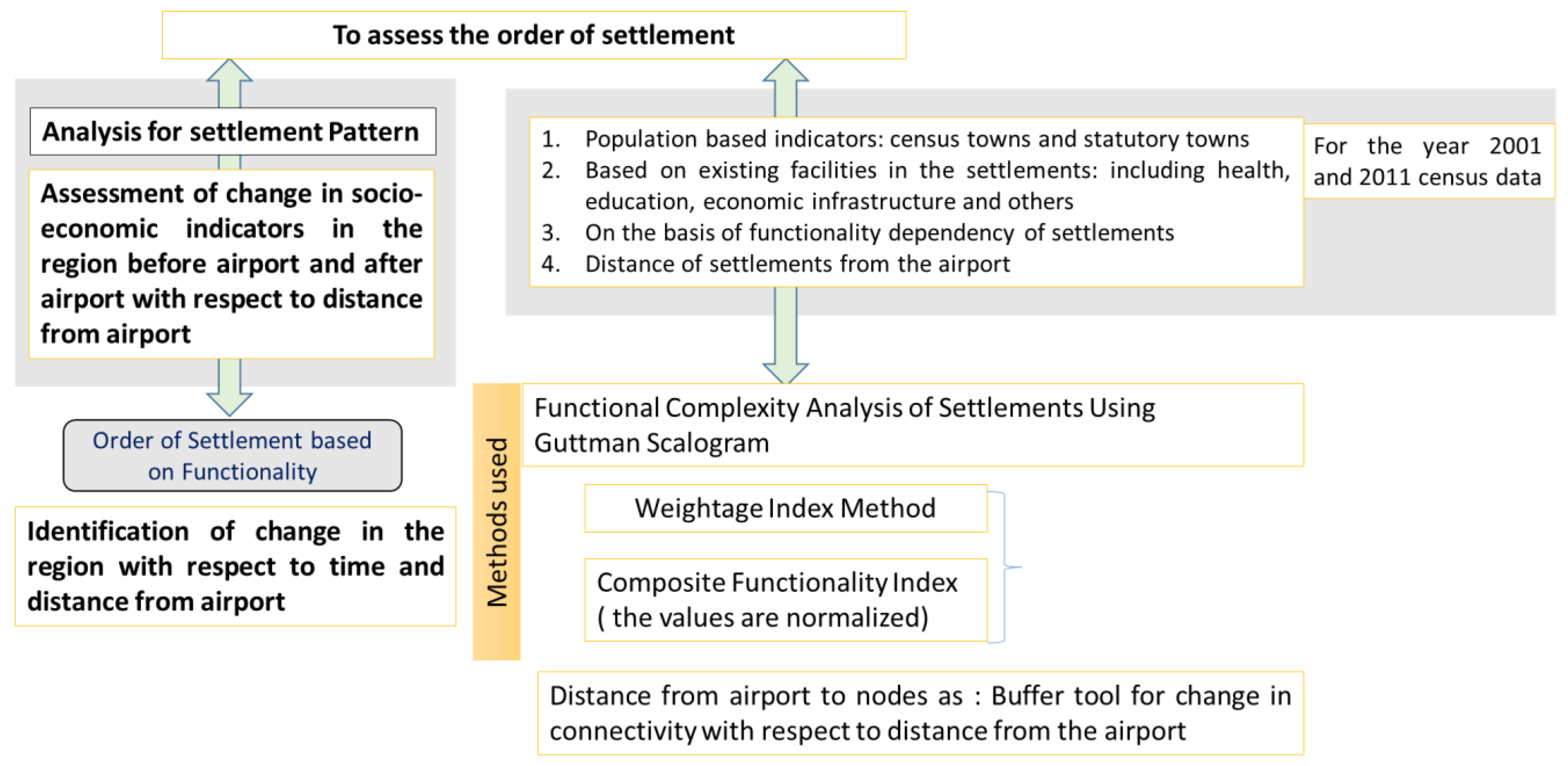
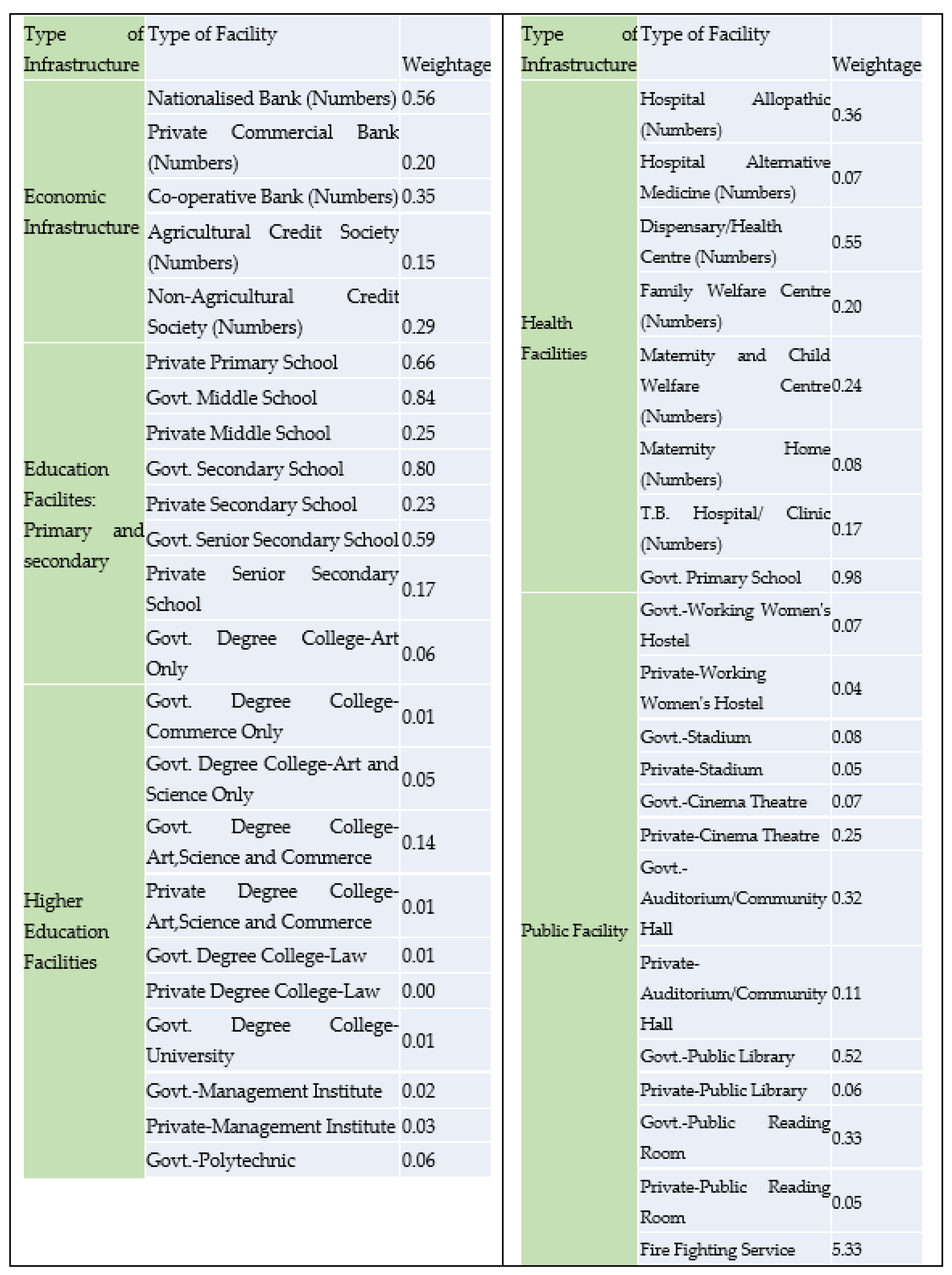
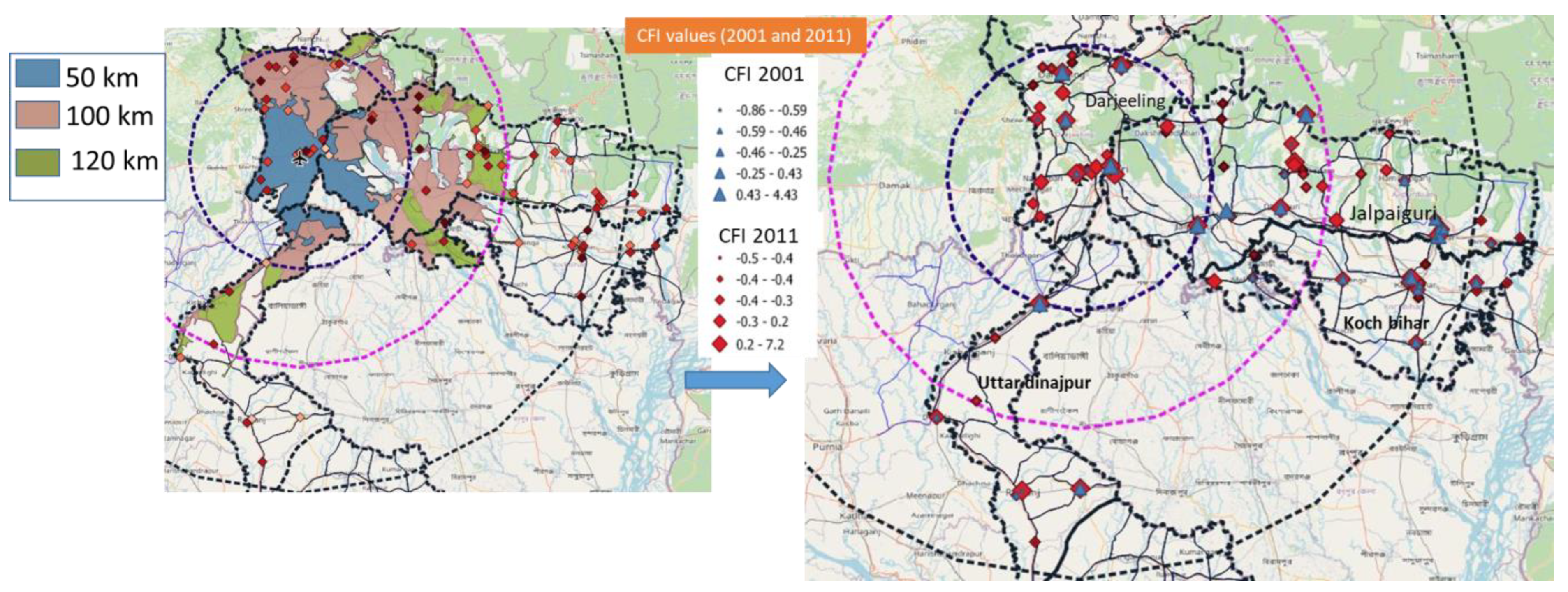

| District | Population 2001 | Population 2011 | Area of the District | No. of Census Towns 2001 | No. of Census Towns 2011 | No. of Statutory Towns 2001 | No. of Statutory Towns 2011 |
|---|---|---|---|---|---|---|---|
| Darjeeling | 1,609,172 | 1,846,823 | 3149 km2 | 4 | 24 | 4 | 5 |
| Jalpaiguri | 3,401,173 | 3,872,846 | 6227 km2 | 13 | 35 | 3 | 4 |
| Koch bihar | 2,479,155 | 2,819,086 | 3387 km2 | 4 | 12 | 6 | 6 |
| Uttar dinajpur | 2,441,794 | 3,007,134 | 3140 km2 | 3 | 5 | 3 | 4 |
| Based on Change in Class Size of the Settlement (2001 to 2011) | ||
|---|---|---|
| Distance Buffer (km) | Rural to Urban | Change in Class Size |
| 50 | Out of 54 settlements, 28 | 23 |
| 100 | 16 | 8 |
| 150 | 6 | 3 |
| 200 | 4 | 2 |
Publisher’s Note: MDPI stays neutral with regard to jurisdictional claims in published maps and institutional affiliations. |
© 2022 by the authors. Licensee MDPI, Basel, Switzerland. This article is an open access article distributed under the terms and conditions of the Creative Commons Attribution (CC BY) license (https://creativecommons.org/licenses/by/4.0/).
Share and Cite
Sharma, S.; Ram, S. Evaluation of Spatio-Temporal Settlement Pattern in an Airport Region. Urban Sci. 2022, 6, 72. https://doi.org/10.3390/urbansci6040072
Sharma S, Ram S. Evaluation of Spatio-Temporal Settlement Pattern in an Airport Region. Urban Science. 2022; 6(4):72. https://doi.org/10.3390/urbansci6040072
Chicago/Turabian StyleSharma, Shalvi, and Sewa Ram. 2022. "Evaluation of Spatio-Temporal Settlement Pattern in an Airport Region" Urban Science 6, no. 4: 72. https://doi.org/10.3390/urbansci6040072
APA StyleSharma, S., & Ram, S. (2022). Evaluation of Spatio-Temporal Settlement Pattern in an Airport Region. Urban Science, 6(4), 72. https://doi.org/10.3390/urbansci6040072





